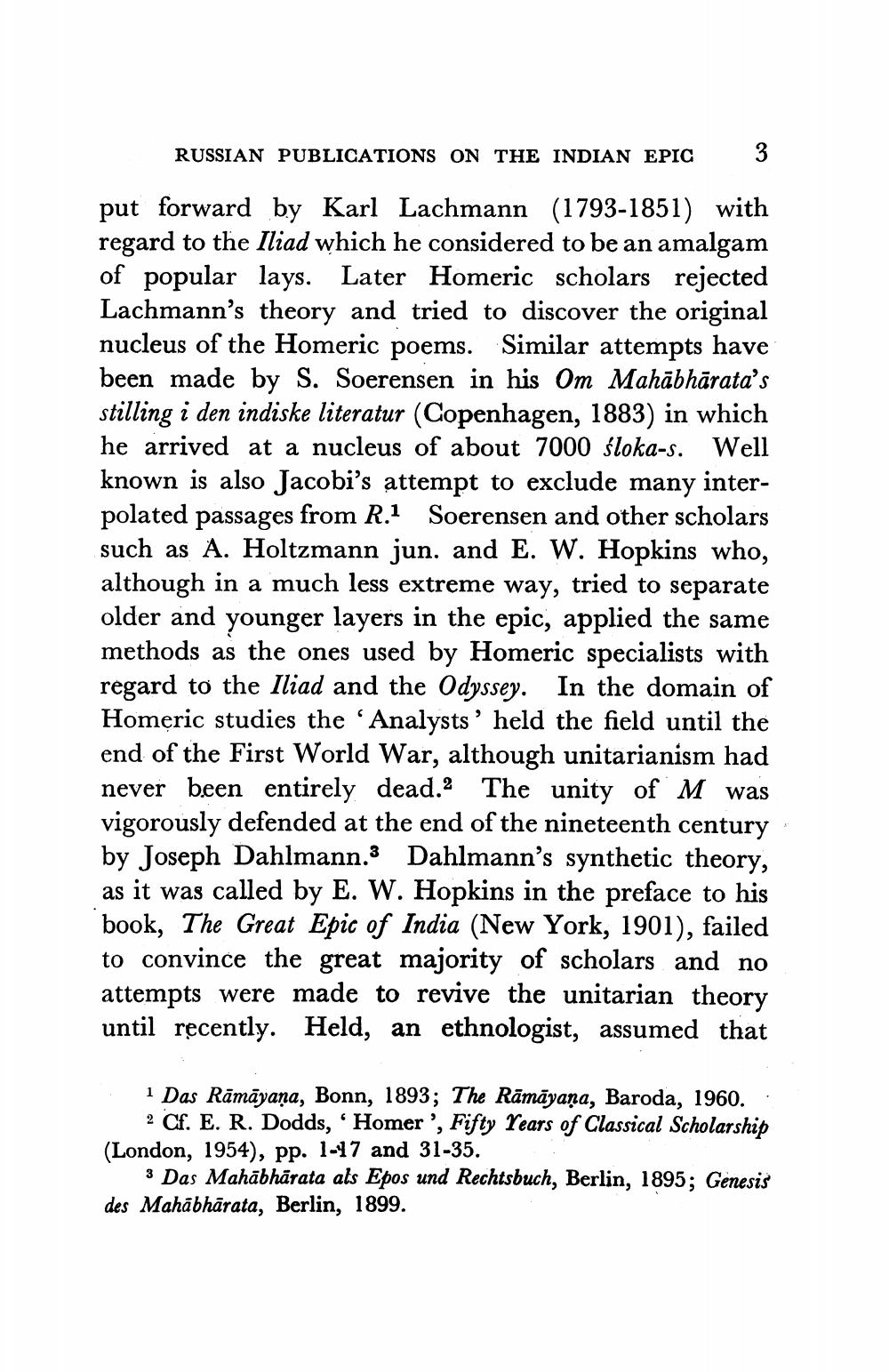________________
RUSSIAN PUBLICATIONS ON THE INDIAN EPIC
3
put forward by Karl Lachmann (1793-1851) with regard to the Iliad which he considered to be an amalgam of popular lays. Later Homeric scholars rejected Lachmann's theory and tried to discover the original nucleus of the Homeric poems. Similar attempts have been made by S. Soerensen in his Om Mahābhārata's stilling i den indiske literatur (Copenhagen, 1883) in which he arrived at a nucleus of about 7000 śloka-s. Well known is also Jacobi's attempt to exclude many interpolated passages from R.1 Soerensen and other scholars such as A. Holtzmann jun. and E. W. Hopkins who, although in a much less extreme way, tried to separate older and younger layers in the epic, applied the same methods as the ones used by Homeric specialists with regard to the Iliad and the Odyssey. In the domain of Homeric studies the 'Analysts' held the field until the end of the First World War, although unitarianism had never been entirely dead. The unity of M was vigorously defended at the end of the nineteenth century by Joseph Dahlmann.3 Dahlmann's synthetic theory, as it was called by E. W. Hopkins in the preface to his book, The Great Epic of India (New York, 1901), failed to convince the great majority of scholars and no attempts were made to revive the unitarian theory until recently. Held, an ethnologist, assumed that
. Das Rāmāyaṇa, Bonn, 1893; The Rāmāyaṇa, Baroda, 1960..
2 Cf. E. R. Dodds, 'Homer ', Fifty Years of Classical Scholarship (London, 1954), pp. 1-17 and 31-35.
3 Das Mahābhārata als Epos und Rechtsbuch, Berlin, 1895; Genesis des Mahābhārata, Berlin, 1899.




